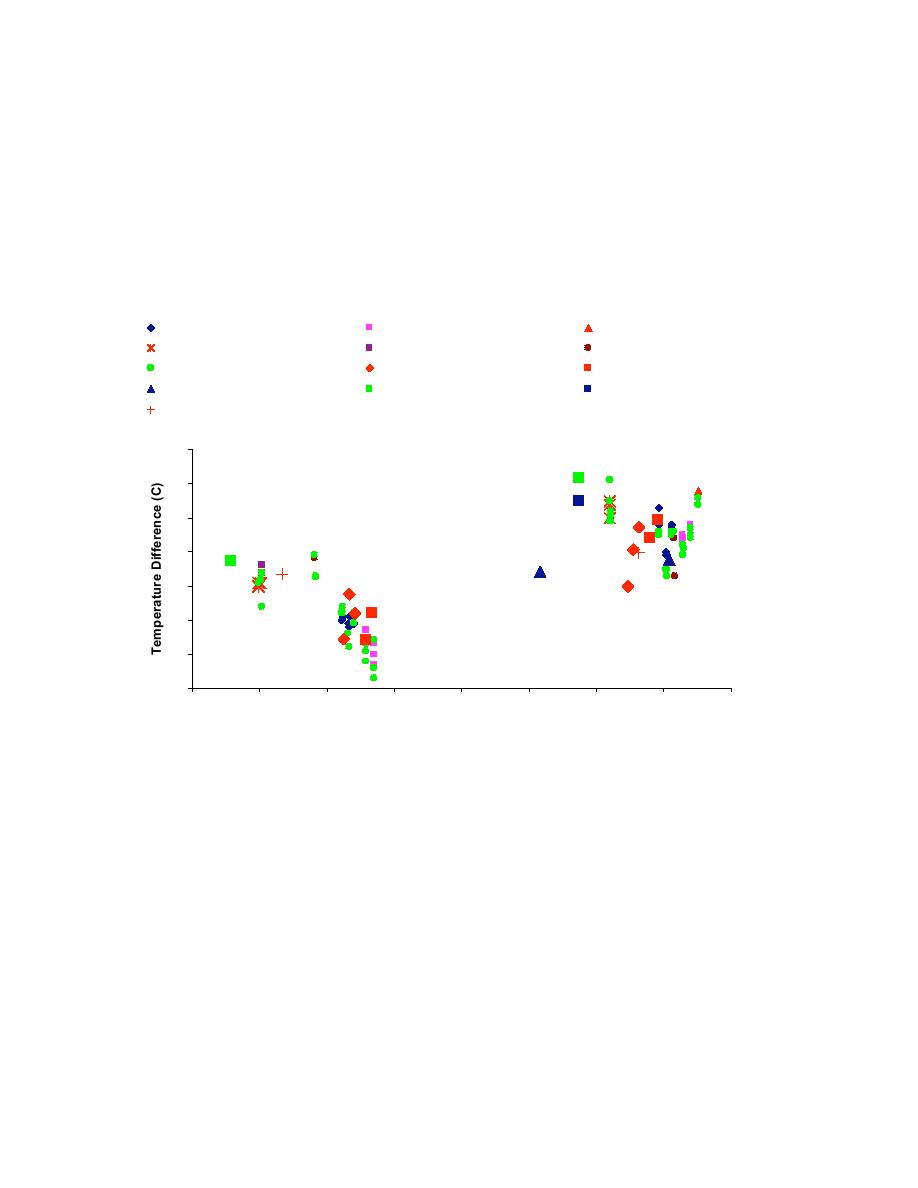
in the way of data that the sensors were reporting when these infrared measurement were
made. However, we must conclude from these results that the measurements taken by the
road temperatures sensors can not be taken as an absolute standard against which models
can be compared, or for that matter should be calibrated against. It is important to point
out that it is quite likely that the apparent temperature differences we observed would be
lower or possibly nonexistent in times of lower radiant loadings. This is just one factor
that we'd suggest be investigated in a future study.
Altoona-Camera
Ankeny-Camera
Ames I35-Camera
IA4
Jefferson-bridge-camera
Marshalltown-Camera
Jefferson-Camera
Altoona-Thermometer
Ankeny-Thermometer
Ames I35-thermometer
Jefferson-Thermometer
Jefferson-bridge-Thermometer
Marshalltown-Thermometer
4
3
2
1
0
-1
-2
-3
0
2
4
6
8
10
12
14
16
Local Time
Fig. 12.2. Infrared roadway temperature sensor analysis, "puck" temperature minus
roadway temperature.
12.2 Iowa MDSS Demonstration Background
During the Iowa DOT MDSS field program conducted on several roads and overpasses in
and around Des Moines and Ames, Iowa, a modified version of the Cold Regions
Research Engineering Laboratory's (CRREL) SNTHERM model was used to predict the
road surface temperatures. The main modification to SNTHERM involved `turning off'
the latent heat exchange between the road and the atmosphere. In addition, for bridges the
141



 Previous Page
Previous Page
